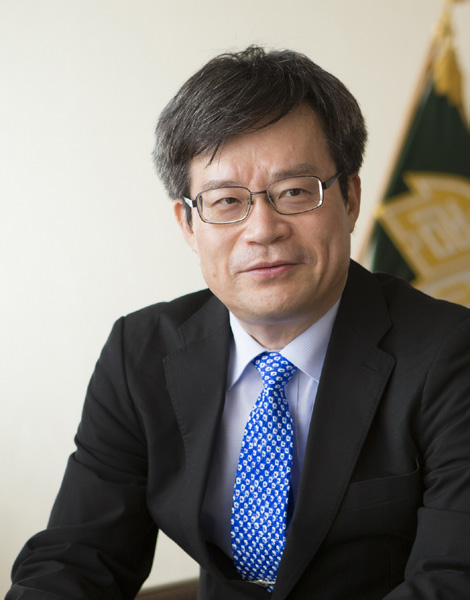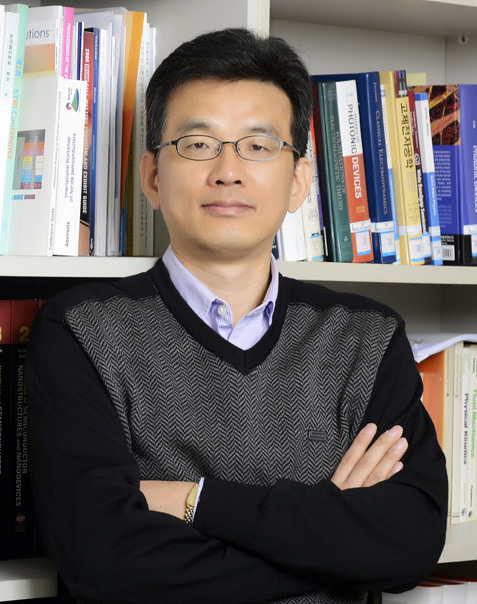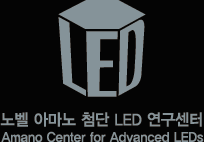Amano Center for Advanced LEDs
The Nobel Amano Advanced LED Research Center creates new applications through efficiency
and performance that surpasses existing photovoltaic and energy devices and conducts research
to develop advanced devices based on nanostructure technology of nitrate semiconductors.
To secure global research capabilities and market commercialization goals, we will create the best
research environment through advanced research guidance and joint research cooperation with
Professor Amano, winner of the 2014 Nobel Prize in Physics, as a leading authority and expert in
this field.
GIST is committed to building a successful research environment while striving for excellent
research results at the Nobel Amano Advanced LED Research Center, and we will do our best
to contribute to the development of related industries and the training of outstanding human
resources.

Honorary Director of Amano Center for Advanced LEDs
Hiroshi Amano
• Professor, Nagoya University
• Director, Center for Integrated Research of Future Electronics,
Nagoya University
• Director, Akasaki Research Center, Nagoya University
1996 / IEEE/LEOS Engineering Achievement Award
2014 / Person of Culture Merit
2014 / Order of Culture
2014 / Nobel Prize in Physics
2015 / Chu-Nichi Culture Prize
Vice Director of Amano Center for Advanced LEDs
Dong-Seon Lee
Professor, School of Electrical engineering and computer
Science, GIST

You won the 2014 Nobel Prize in Physics. What was the essence of your Nobel Prize acceptance
speech in Stockholm, Sweden? Please briefly introduce the focus of your research to the public
The most important point of my speech was not related to my research but to express my
gratitude and appreciation to the previous researchers of GaN, especially Professor Jack Pankove,
Dr. Paul Maruska, and my supervisor Professor Isamu Akasaki, for their continuous contribution
to research that led to the fabrication of blue LEDs based on GaN. Without their efforts, I could
not have developed the low-temperature buffer layer technology or p-type GaN. People can now
enjoy smartphones having full color displays because of the emergence of blue LEDs. In Japan,
total electricity consumption can be reduced by about 7% by replacing conventional incandescent
and fluorescent light bulbs with LED lighting system. Most importantly, we can provide compact
lighting systems to the younger generation, especially children in remote areas without access to
electricity. Using a combination of an LED light with a solar panel, children can read books and
study at night.
As the director of the "Amano Center for Advanced LEDs, GIST (Gwangju Institute of Science
and Technology) ," what is the ultimate direction and goal that you want the research center to
pursue?
We are interested in developing any kind of LED-based device or systems that will provide major
benefits to humankind. Full color micro/nano-LED displays are one example. We are facing a rapid
expansion in the amount of information transmitted. Now, we are using smartphones or PCs as
the interface between the internet and humans. In general, we are using our fingers to control
these devices, the speed of which will not be sufficient in the future so we need a much faster
interface system and method of control. We believe that micro/nano-LED displays controlled by
the motion of the eye are the most promising next- generation interface between the internet
and humans.
Please briefly introduce to us the key areas of joint research that you are conducting with the
Amano Center for A d vanced LEDs , and GIST
We are accepting one doctoral course student from GIST, and our joint research is based on his
activity at Nagoya University. The aim of his research topic is to establish process technology, for
active matrix LED display wafers driven by CMOS.
In 2016, there was a lecture called "Meeting Noble Laureates" at GIST.
Do you have any memorable experiences or impressions of GIST students during that lecture?
Visiting GIST where I gave a talk and had a discussion with the students, was a heart-warming
experience. I was very happy to receive so many excellent questions from the students. Also, I was
touched by the very kind hospitality of one of the students of Professor Dong-Seon Lee, Principal
Investigator of ACALEDs, who picked me up at the airport and took me to GIST. The discussion
with him in the taxi to GIST was very invigorating.
Please share any final thoughts with our audience.
I am very lucky to be carried out joint research with Professor Dong-Seon Lee, one of the top
researchers of GaN-based micro-LED display fabrication. Combining the device process technology
being developed at GIST and the crystal growth technology being developed at Nagoya University
will surely lead to new internet-human interfaces. If there are any students at GIST who are
interested in our group activity, please do not hesitate to contact me. We will give you a very
warm welcome if you visit us and decide to join us to carry out joint research.



